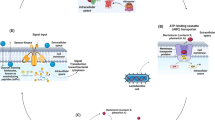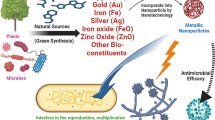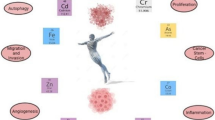Abstract
Today nanosciences are experiencing massive investment worldwide although research on toxicological aspect of these nano-sized particles has just begun and to date, no clear guidelines exist to quantify the effects. In the present study, we focus on silver nanoparticles, which represent one of the most widely investigated nanoparticles. The present data indicate that silver nanoparticles seem to cross the cellular membrane of various tissues in Sprague Dawley rat and, therefore, might have an influence on cell physiology and function. Rats are exposed via oral administration and intravenous injection with commercial silver nanoparticles. Three types of silver nanoparticels are used in this study: 1) Type I, particle size 50–90 nm with no dispersant, 2) Type II, particle size 1–10 nm dispersed with several amino acids. After 4 weeks exposure we examined the clinical indicators from blood and also analyzed histological changes in various tissues, including liver, kidney, and lung, to investigate the histopathological changes. The concentration of 2 indicators, total cholesterol and creatinine were changed with statistical importance. Also, lymphocytes/granulocyte ratio was significantly increased by silver nanoparticles. The histological change had accordance with the change of clinical indicators. The inflammatory symptoms were observed in liver tissue and it lead to the result that the hematologic/lymphocytic disorder, not hepatic disorder, would be related to silver nanoparticle toxicity. Finally we propose 4 genes as size independent genomic biomarkers and 10 genes as representative biomarkers for histopathological and clinical changes for silver nanoparticle exposure.
Similar content being viewed by others
References
Rai, M., Yadav, A. & Gade, A. Silver nanoparticles as a new generation of antimicrobials.Biotechnol Adv 27, 76–83 (2009).
Böckmann, J., Lahl, H., Eckert, T. & Unterhalt, B. Titan-Blutspiegel vor und nach Belastungsversuchen mit Titandioxid.Pharmazie 55, 140–143 (2000).
Maynard, A. D. inNanotechnology: A Research Strategy for Addressing Risk (Woodrow Wilson International Center for Scholars, Washington, DC., 2006).
Chen, X. & Schluesener, H. J. Nanosilver: A nanoproduct in medical application.Toxicol Lett 176, 1–12 (2008).
Braydich-Stolle, L., Hussain, S., Schlager, J. & Hofmann, M. C. In vitro cytotoxicity of nanoparticles in mammalian germ line stem cells.Toxicol Sci 88, 412–419 (2005).
Ji, J. H.et al. Twenty-eight-day inhalation toxicity study of silver nanoparticles in Sprague-Dawley rats.Inhal Toxicol 19, 857–871 (2007).
Hussain, S.et al. In vitro toxicity of nanoparticles in BRL3A rat liver cells.Toxicol In vitro 19, 975–983 (2005).
Kim, Y. S.et al. Twenty-eight-day oral toxicity, genotoxicity, and gender-related tissue distribution of silver nanoparticles in Sprague-Dawley rats.Inhal Toxicol 20, 575–583 (2008).
Oberdorster, G., Oberdorster, E. & Oberdorster, J. Nanotoxicology: An emerging discipline evolving from studies of ultrafine particles.Environ Heal Perspect 113, 823–939 (2005).
Fielden, M. R.et al. A gene expression signature that predicts the future onset of drug-induced renal tubular toxicity.Toxicol Pathol 33, 675–683 (2005).
Ganter, B.et al. Development of a large scale chemogenomics database to improve drug candidate selection and to understand mechanisms of chemical toxicity and action.J Biotechnol 119, 219–244 (2005).
Author information
Authors and Affiliations
Corresponding authors
Rights and permissions
About this article
Cite this article
Kim, E., Maeng, JH., Lee, D.H. et al. Correlation of biomarkers and histological responses in manufactured silver nanoparticle toxicity. Toxicol. Environ. Health. Sci. 1, 8–16 (2009). https://doi.org/10.1007/BF03216458
Issue Date:
DOI: https://doi.org/10.1007/BF03216458




